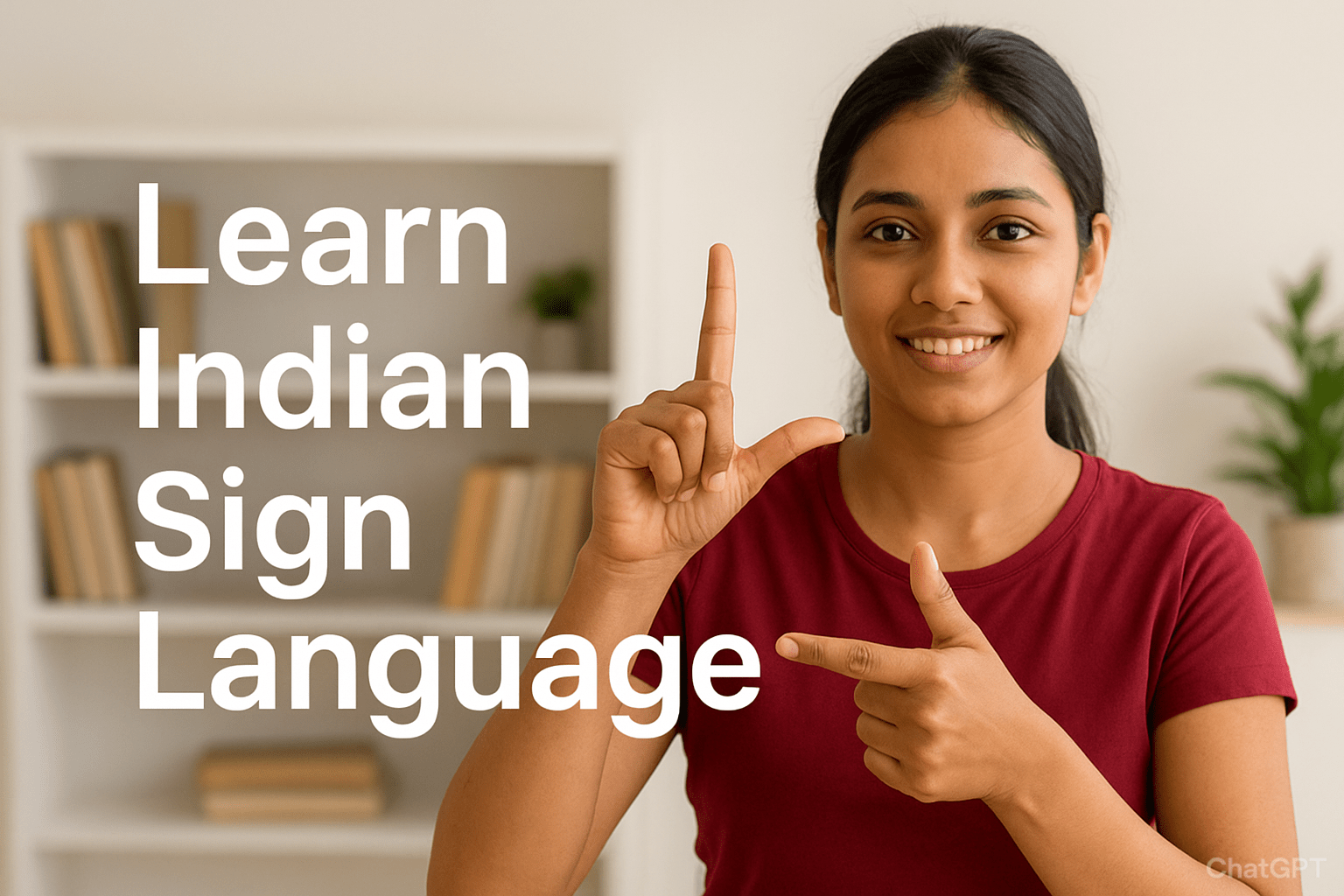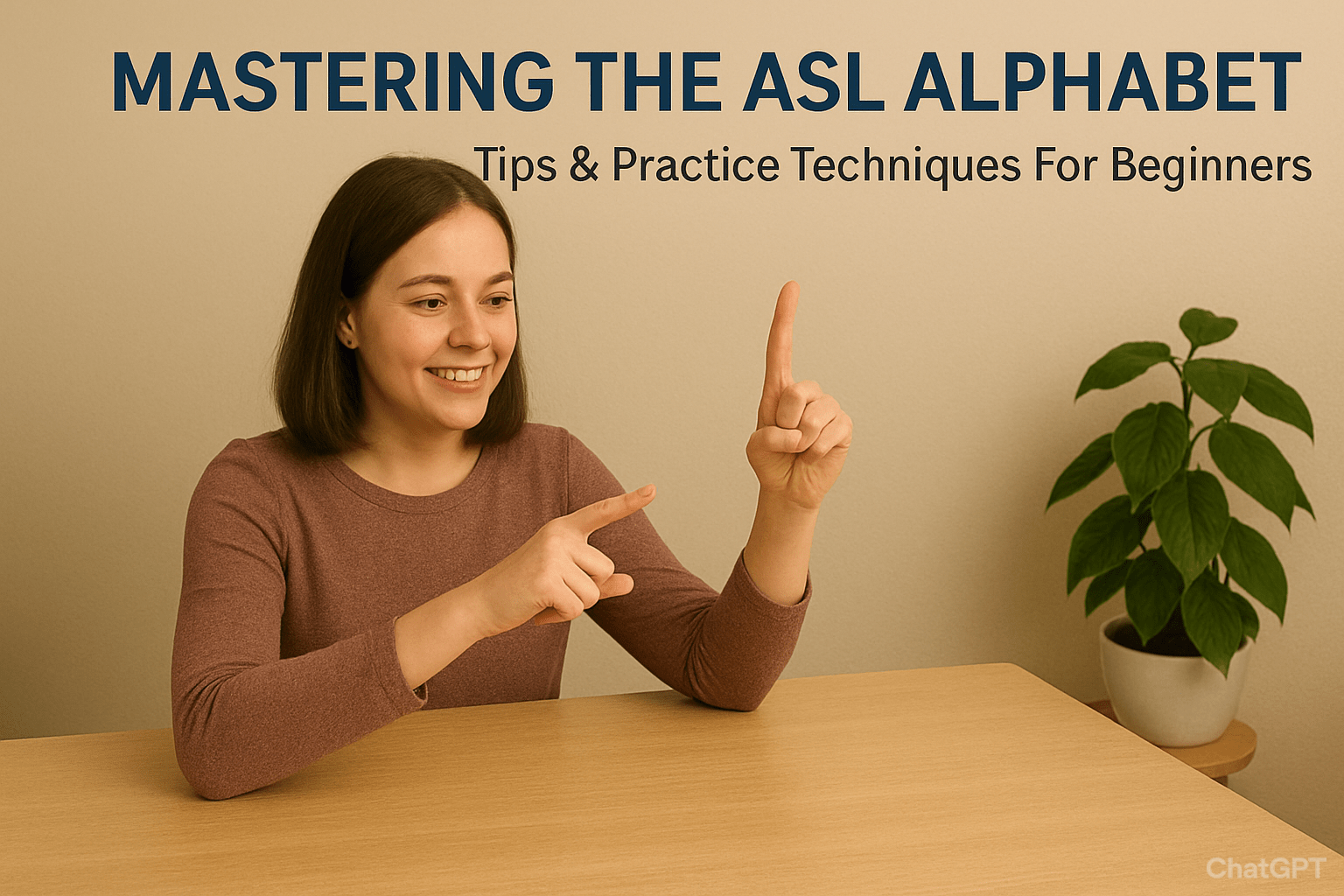When was the last time you tried to talk to someone but couldn’t find the words? Maybe it was a noisy street, or maybe you didn’t speak the same language. Now imagine living in that world every day. For millions of Deaf people in India, Indian Sign Language (ISL) is their voice, their connection, and their culture.
And here’s the good news — you can learn it too. Whether you want to connect with Deaf friends, make your workplace more inclusive, or just pick up a meaningful new skill, learning Indian Sign Language is a powerful step. Let’s walk through what ISL is, why it matters, and how you can start — without feeling overwhelmed.
So, What Exactly Is Indian Sign Language?
Indian Sign Language isn’t just “gestures” or a word-for-word version of English. It’s a rich, complete language with its own grammar, rhythm, and personality. It uses hand shapes, facial expressions, and body movements to create meaning — sometimes in ways words just can’t capture.
Every country has its own sign language, and ISL is the one used by India’s Deaf community. That means if you learn it, you’re not just memorizing signs — you’re stepping into an entire culture.
👉 Curious already? Check out the Indian Sign Language Dictionary to see real-life examples.
Why Bother Learning Indian Sign Language?
Honestly? Because it changes lives — yours and others’. Here are some real reasons people take the leap:
- You can finally say hello to a Deaf neighbor or coworker without awkward hand waves.
- You open new career paths — interpreters and ISL teachers are in short supply.
- You gain friendships you never thought possible.
- You sharpen your brain (learning any language boosts memory and focus).
- You become an ally to a community that’s often left out of conversations.
It’s not just about learning signs. It’s about connection.
How Do You Actually Start?
Starting something new can feel intimidating, but ISL is easier than you think. Here’s a friendly step-by-step:
1. Begin with the Alphabet and Numbers
This is your foundation. Once you know how to spell words, you’ll never be stuck.
👉 Try our Alphabet & Numbers guide for a quick start.
2. Pick Up Everyday Signs
Learn greetings, polite phrases, and daily basics like “thank you,” “water,” and “eat.” These make conversations possible right away.
3. Watch Deaf Signers in Action
The magic of ISL isn’t just the hands — it’s the face, the flow, the energy. Watch videos, films, or even join Deaf events to see it in action.
4. Practice a Little Every Day
Ten minutes a day is better than one hour once a week. Treat it like brushing your teeth — just part of the routine.
5. Connect with the Community
The fastest way to learn any language? Talk to people who use it every day. The Deaf community is welcoming if you come with respect and curiosity.
Mistakes Everyone Makes (And Why They’re Okay)
When you’re new, you’ll mess up. That’s part of learning. Here are a few common hiccups:
- Trying to translate English directly — ISL has its own grammar.
- Forgetting facial expressions — your face carries half the meaning!
- Skipping practice because “life got busy.”
- Worrying too much about being perfect.
Here’s the truth: people care more about your effort than your accuracy.
Your Toolbox for Learning ISL
You don’t need fancy classes to begin. Here are resources you can tap into:
- 📖 SignAcademy.org Dictionary – Free, video-based, and easy to search.
- 🎥 YouTube channels run by Deaf educators.
- 📚 Books like Indian Sign Language: A Resource Book for Beginners.
- 🤝 Local Deaf associations or workshops.
Staying Motivated When It Gets Tough
Like any language, some days you’ll feel stuck. Here’s how to push through:
- Set tiny goals (5 new signs a week feels doable).
- Teach a friend or family member — you’ll remember better.
- Record yourself signing — it’s fun to see your progress.
- Celebrate little wins (like ordering chai in ISL).
Wrapping It Up
Learning Indian Sign Language isn’t just about adding a skill to your list — it’s about opening doors. The first time you have even a short conversation with a Deaf person, you’ll realize how powerful it is.
So start today. Learn the alphabet, pick up a few greetings, and most importantly, use them. You don’t need to be fluent to make someone feel seen and understood.
👉 Ready to take the first step? Explore the ISL Dictionary and learn your very first signs today.


